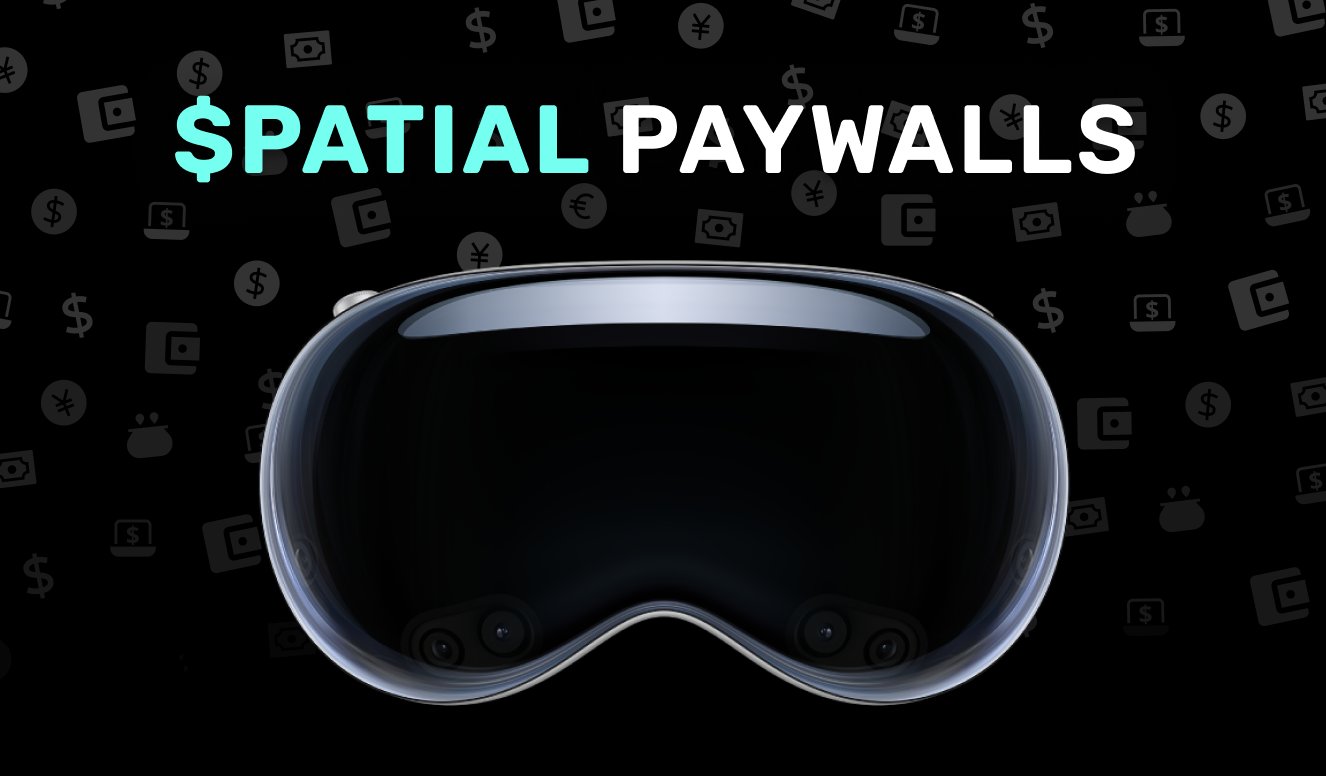Spatial Paywalls: What does monetization look like in visionOS?
Now that visionOS is out in the wild, there seems to be one of those magical Apple moments happening: technology before this moment, and technology afterwards. Sure, when the iPhone launched, there were scores of existing devices to choose from. But the iPhone was so different, so advanced and so forward thinking — it changed mobile phones for good.
With Apple Vision Pro, I'd wager the same thing will happen in the AR/VR space. Technologies like passthrough, high fidelity displays and hand tracking have been around a while now. But, Apple Vision Pro is doing those things better than what's come before. And, it's attempting its own "wrinkles" in the space — think digital personas, immersive environments and most importantly, visionOS itself.
So, will the marquee features of visionOS and mixed reality environments impact monetization strategies?
If what's here and what's to come is new and different — does that mean app monetization will be different, too? Does the design of our paywalls change? How can we present information differently in this new space?
That's a question all of us at Superwall have been asking ourselves since February 2nd. In fact, we think it's such an important point to consider that we ended up buying everyone on the team their own Apple Vision Pro. As we've been using it more, here are the questions we've been trying to find answers to:
What's new about visionOS design now? What do we know, and how does it relate to paywalls?
Will developers leverage ARKit, RealityKit, and other visionOS frameworks to create value-added features or content specific to the device? And will those be core to the upsell experience?
What will the best practices be?
We don't have the answers quite yet, but I think we'd all have to start with the first one.
visionOS' design language
The first thing Apple says when you visit their design documentation is that people enter an "infinite 3D space" when using Apple Vision Pro:
Already, that changes everything. In comparison to the input models we're used to, you can interact with software in a full, 3D space now. Tapping a flat, rectangular screen is a world apart from tapping your finger together as a "click", or moving your eyes around as a mouse. The depth, immersion and nascent input models meant there was a novel opportunity for Apple to make a new operating system (which they did!).
Even though visionOS was based off of iPadOS, you can feel the new design language immediately. Check out Notes here on visionOS:
You can feel that its Notes by looking at it. The view hierarchy is nearly the same, but yet it feels much different than it does on iPadOS or macOS. Here's a quick refresher of what the design is like on macOS Sonoma — courtesy of my two year old Christmas list I made:
Cliché as it may be, they are the same yet different. So, what does that mean for paywalls? Do we simply remove opaque backgrounds, add in the glass effect and ensure we're using the native controls? That's what I did for my own app, though I'm not convinced that it's doing visionOS justice. It simply is visionOS enough right now.
Here's my paywall on visionOS...
...and, then on iPadOS:
Mine is a classic example of what I've mostly seen up to this point: the same design, ideas and layout — but using native visionOS controls. Certainly, that's a fantastic start! But, just as Apple rethought several of their primary apps for visionOS, I can't help but wonder if we should be doing the same not only for our own visionOS apps, but in our paywall or monetization efforts.
For example, here's one example (from Locked Notes: Access) that I found particuarly interesting. Perhaps our paywalls might move to something more like this:
So far, Apple doesn't appear to have official platform advice on paywalls for visionOS. But, the platform is so different than what's come before. And, all of this leads us to this one, central thought.
Will "spatial" paywalls become an emerging concept?
Paywalls that take advantage of Spatial Audio, immersion and spatial input? Or, will the simple windowed interfaces continue to work? Perhaps it will be a mix of the two, sort of like how visionOS apps appear today? There seems to be an opportunity here to take advantage of the new APIs and technology of Vision Pro and do better that what's out there.
Final Thoughts
It's an exciting time to be developing for Apple's platforms. It's no secret our goal is to help developers ultimately make money to sustain their business' with our configurable and testable paywalls. And that mission is why Apple Vision Pro is so fun for us to think about — we simply don't know how to best monetize here yet!
The things we're doing today? They'll probably look elementary in five years from now. The designs, interaction models and overall flows.
But, we're happy to be on the journey with you as we figure all of this out. Be sure to keep an eye out for some new things we're already workshopping here at Superwall specifically for Apple Vision Pro. We're investing in the platform, and we can't wait to help developers monetize in visionOS.







